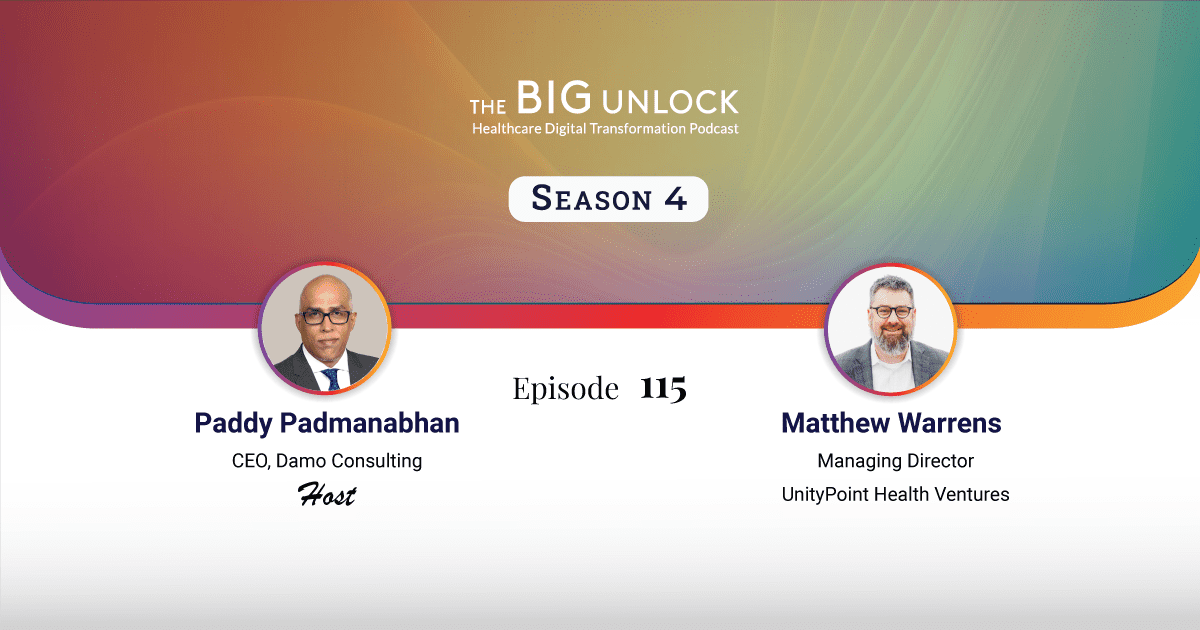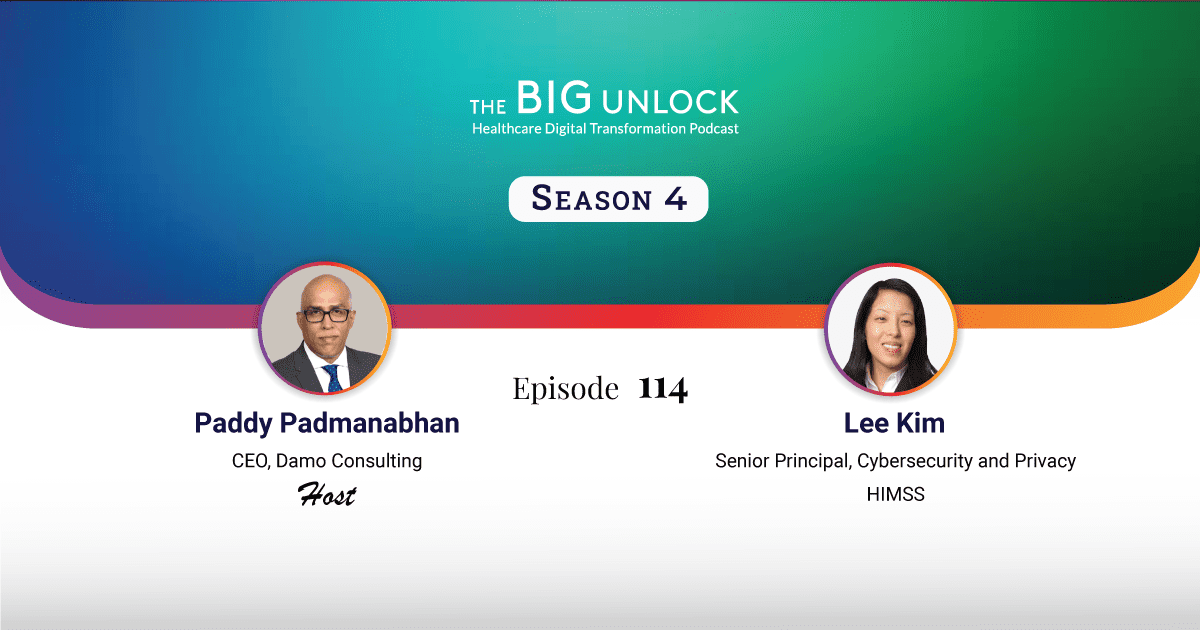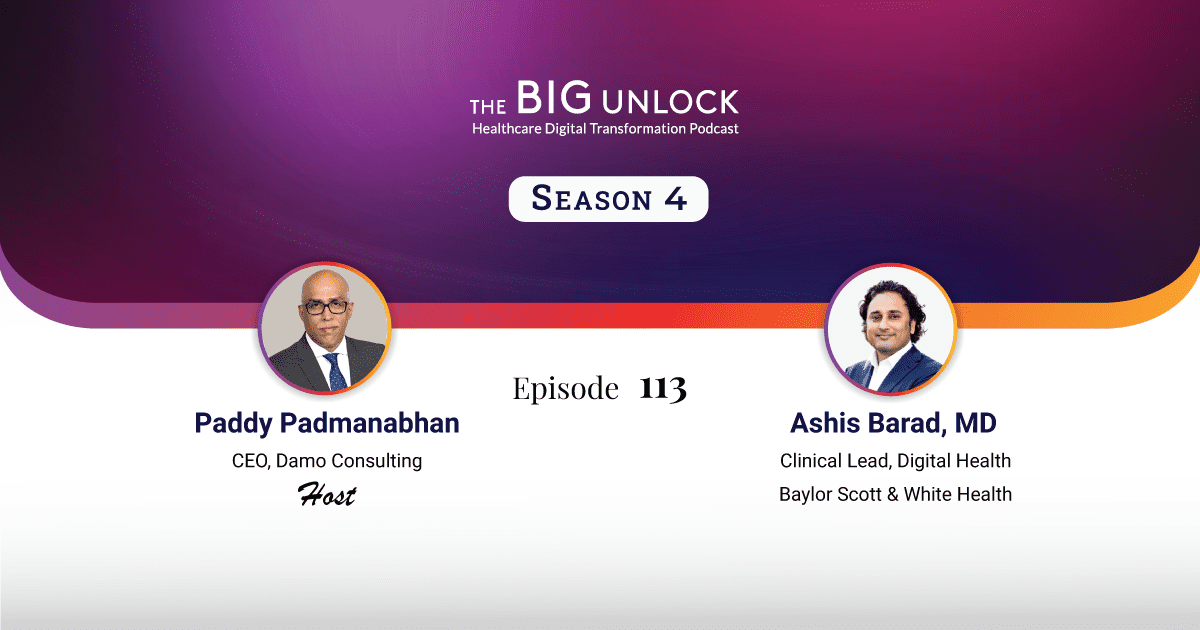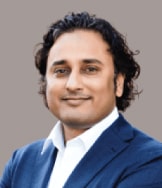Season 4: Episode #115
Podcast with Matthew Warrens, Managing Director, UnityPoint Health Ventures
"Digital health startups must pick a lane and stay with it"
 Hosted by Paddy Padmanabhan
Hosted by Paddy Padmanabhan 
Share
In this episode, Matthew Warrens, Managing Director at UnityPoint Health Ventures, shares some of the learnings from their portfolio companies, and how UnityPoint Ventures approaches digital health investments.
UnityPoint Ventures invests in startups at various stages of their growth. Matt discusses their investment themes, what they look for in startups, and how they leverage the UnityPoint Health ecosystem to help their portfolio companies scale and grow – while clarifying that portfolio companies are not guaranteed a commercial contract with the health system.
Matt discusses the ongoing labor shortage and how that is reshaping priorities, the emerging competitive landscape for health systems, and the overall VC funding environment for digital health. Take a listen.
Show Notes |
||||
| 00:42 | About UnityPoint Health and where UnityPoint Ventures sits within the overall organization? | |||
| 02:12 | So what led UnityPoint Health to start a venture arm? What's your mandate and focus of the Venture? | |||
| 05:33 | When you started out with the Venture, what kind of themes did you decide to focus on? | |||
| 07:14 | Do your portfolio companies automatically become enterprise technology partners to UnityPoint Health? | |||
| 10:52 | Can you talk about a couple of the investments? | |||
| 14:29 | What themes excite you today when you look at the digital health startups landscape? | |||
| 17:14 | Do you think automation is what you're referring to when you mention some solutions to overcome the labor shortage issue? | |||
| 18:55 | What are you hearing from the digital health startups about their challenges? When you track their progress, what are the things that you see them struggling with the most? | |||
| 22:36 | What’s your advice to new digital health startup founders who approach you? | |||
About our guest

Matt Warrens has over twenty years of experience in the health care industry. Currently, he is the Managing Director of Innovation for UnityPoint Health Ventures . An experienced innovation leader, he is driven to transform health care into a science of prevention culture to improve the quality of life. Matt has strong operations experience focusing on identifying, developing, and implementing new products and services for health systems. His ability to identify clinical and operational technologies will accelerate the transition to value-based care.
Prior to joining UnityPoint Health, Matt served OSF HealthCare System for nearly twenty years in various roles including its Vice President of Innovation Partnerships and Executive Director of Jump Trading Simulation and Education Center. He is a graduate of Bradley University’s Executive MBA program and Southern Illinois University’s Healthcare Administration Degree.
Q. Could share a little bit about UnityPoint Health and where UnityPoint Ventures sits within the overall organization?
Matt: UnityPoint Health is a health system primarily based in Iowa with regions across the state. We also have small footprints in Illinois and Wisconsin. It’s a 20+ hospital system, and while hospitals aren’t a great measuring stick for systems in the Midwest, typically because there are large quantum tertiary care centers with 700 beds and one can have critical access hospitals like we do with 20-some beds, we have over 1100 primary care providers in our network. We are very much a value-based care organization and have almost 40 percent of our patient population in some type of ACO or value-based model. We’re continuing to trend in that direction of adding even more.
I joined the organization a little over three and a half years ago. Innovation was a complete white slate here and so it was somewhat attractive and somewhat challenging. Innovation and the venture fund itself report up through the Chief Strategy Officer which I think is similar across organizations. But I would tell you that the entire C-suite is involved with our investment decisions and our innovation program.
Q. What led UnityPoint Health to start a venture arm? What’s your mandate and focus of the venture?
Matt: In the organization I worked with previously for over 20 years, I’d been in a lot of operational roles. Later in my career, I was working with the C-suite on special projects and had the opportunity to help build a commercialization arm. Shortly after, there was an idea there, probably in 2015, around starting a venture fund.
I worked with some individuals managing venture funds outside of healthcare and that was an interesting kind of a learning curve. I recruited a team there and ultimately ended up managing the pipeline for that fund. I spent a lot of time traveling the country, looking for these startup companies and having been an operator in healthcare for so long, I think I somewhat looked at things through the lens of understanding how hospital operations really worked. I was thus able to quickly sift through where the real value opportunity was going to be. When I started learning about the venture aspect, I decided that this was something I wanted to do full-time. I had a lot of other responsibilities in my former role. So, when this opportunity came up, I was really attracted. I talked to the leadership team.
I get plenty of calls from health system leaders or CEOs who want to start a venture fund. To be quite honest, the first thing I tell them is “You shouldn’t start a fund. Here’s a list of three or four great institutional investors that have a great track record of returning great financial returns.” I tell them that because unless they recruit a team with experience in doing this and really understand how to evaluate opportunities and underwrite specific financial returns versus more like the scatter approach that one sees not just health systems, but across for-profit and not-for-profit organizations who have venture arms doing this sometimes, it’s hard.
That scatter approach makes it tough to tell how you’re performing. What are you benchmarking against? When you have an actual fund with an actual financial thesis, you can benchmark it in time with other funds during that same time period and show success or failure. That’s why you see kind of a constant reevaluation of systems that may or may not be investing like this. I think that was what attracted me to coming here to UnityPoint. They understood that we needed to take that approach of sticking to a financial thesis, having a dedicated team, and really leveraging the strategic value that having a fund could bring.
Q. While this is a relatively new initiative for UnityPoint Health, larger health systems have had innovation in venture funds for an extended period of time — UPMC Providence, Kaiser are a few of the names that come to mind — when you talk about those, what kind of themes did you decide to focus on? Was there a difference in your approach?
Matt: I would say that early on in our approach or if you looked at the companies that were in our portfolio first or early on, they were primarily a lot of point solutions. That was really just bringing my experience from where I had been previously and recognizing that UnityPoint was somewhat behind in what I would call “digital table stakes.” We didn’t have remote monitoring or digital behavioral health. We weren’t doing shared decision-making, asynchronous visits, and there were some intriguing financial opportunities during that time to invest in those spaces, also knowing that strategically, we could then adopt and bring those solutions inside of UnityPoint.
To your question — then, compared to now, where are we going? – I’d say, if you look at the last three or four investments in the portfolio that are much more enterprise type solutions, we have married our innovation strategy with the organization’s overall strategy, and that’s really allowing us to bring forward what we think are more impactful solutions that will impact the enterprise. You can imagine these are hot topics, especially the current one — recruiting retention. We’ve made some interesting investments in that space just recently.
Q. How about some of your portfolio companies — do these companies automatically get to become enterprise technology partners to UnityPoint Health? Is that part of the attraction for these companies? Is that part of the intent of even investing in these companies?
Matt: It’s a delicate balance and that’s the answer there. We’re primarily making our investments financial, first, so we’re looking to underwrite certain financial returns. That’s how we’re making our decision on investing in those companies. We don’t guarantee any commercial contract for any company that we invest in financially. However, we have a dedicated team in parallel to our venture team which starts work once we’ve made those investments. That organization and our leaders inside of UnityPoint do everything possible to see if we can help them get that commercial contract. So that starts with leadership alignment. One of the things that we often tell or ask leaders is, “Hey! What are you not doing today that you want to be doing? What do you think you’re going to be doing/You need to be doing tomorrow or the next day?”
I often reference this industry agnostic concept, in my opinion of any highly functioning organization, of spinning a flywheel of innovate, operate, grow. So, whatever we’re innovating on today, we put into operations tomorrow to drive strategic growth.
We’re looking to identify companies that we believe can help UnityPoint do that when we bring these opportunities and platforms forward to our leaders. We know that oftentimes these are early-stage companies and so, may be somewhat of a risk, especially when I describe going from originally point type solutions to now more enterprise type solutions. All we’re asking to do, is just give a fair comparison to anything else they’re looking in the market that might be doing similar things. If there are specific platform advantages, financial advantages, etc., that these long-standing organizations can do, we understand why you wouldn’t use the portfolio company that we brought in. But if you can’t find those differences, we have the support of the C-suite to take the risk on these early-stage companies.
In addition, once we get to a commercial agreement with those companies, we also have a separate team — our internal accelerator team that doesn’t report to IT or marketing and doesn’t get sucked up into M&A activities or Epic upgrades. They come to work every day implementing those solutions and comprise Nurse Informatics, Product Managers, etc., and they really help accelerate the adoption of these things. There’s also some annual operating cash in those budgets to pay early-on SaaS-based software fees. Every startup has heard this story from a health system that says, “Oh hey! I love your solution. It’s February. We are two months into our fiscal year. We run on a 12 month budget cycle, so let’s talk next Spring.” What having that kind of a bucket of money does, is help us accelerate those things. So, I’m proud to say that of the 13 companies we have in our portfolio today, 12 of them have a commercial contract with UnityPoint.
Q. You mentioned that you sometimes have to sell within the organization about making bets on these early-stage companies. How early is early? Can you talk about a couple of the investments — at what stage did you get in and how far have they come since?
Matt: When you have these financial returns first alongside a strategic opportunity, you do have to be somewhat opportunistic. So, if you really buy it at our portfolio, you will see investments everywhere from Seed Stage to Series B and some things in between. You can kind of imagine what the revenue path of those companies are. A couple of great examples of companies in our portfolio are our CEOs that you’ve interviewed in your previous podcasts.
The very first investment that we ever made was in a company called RxRevu, which is doing real-time benefits check. Our group has a motto of looking for solutions that make healthcare frictionless for consumers and make Providers’ jobs easier. And so RxRevu, when you think of it through the lens of those two things, every time a physician orders a new medication for a patient, he is automatically pinging the PBM and the insurance company and getting back in real-time what the co-pay for that patient is.
You know, if you ask patients what the number one question they ask their provider, it is when they undertake an office visit, it is — how much is this medication going to cost? And prior to having a solution like RxReve, if a patient asked that, a physician would either say, “I don’t know,” or they would have to get up and leave the room and call an 1800 number, and it would be super painful, right? So, that really meets the standard there. And I would say that was more of a later stage company when we got involved from the investment side.
An earlier stage company, one of our more recent investments, is TailorMed, which is helping payers. I know you recently interviewed the CEO from there. They’re helping patients with financial navigation. So, any health system of our size has what you call financial navigators who come to work every day and they’re working a list out of Epic of all the patients from that night, the day before that etc., who have been ordered to get these high-cost drugs, quite likely infusion drugs or Oncology drugs and whose insurance is not going to cover this. But the good news is there are Pharmacy Manufacturer Rebate programs out there, obviously federal and state programs and independent foundation programs, but those financial navigators must apply to all those different places where they might be able to find coverage for that drug for those patients. The TailorMed solution automates all that for those financial navigators. We’re back again then, to that mantra of frictionless experience for a consumer. So, I’m finding a way to pay for these medications
But, for us, we’re expecting on the financial navigation side that we’re going to increase our productivity from anywhere from 5-10X. And we’re not going to use that to get rid of FTEs. We’re going to use that to expand these programs to help more patients get this type of coverage.
Q. USD 30 billion in VC money went into these digital health startups last year. The money’s going into various themes — there’s this whole patient engagement theme and it’s become like a catch-all term in many ways, there’s AI and clinical trials along with a variety of other themes. What themes excite you today when you look at the landscape?
Matt: I mentioned recruiting and retention earlier, and this is a problem the pandemic has created with not just nursing travelers, but really all of the healthcare professionals that are doing traveling, or locums. It’s creating huge expense to the health systems. And it’s not going to just end when the pandemic ends, because we’ve created now somewhat of a bubble that’s going to go out for years. We’re going to be dealing with this and so, anything that we can bring to bear in that space is of high interest to us.
You mentioned the AI space, and I’d say that personally I still don’t think we’re there. It’s still just a lot of machine learning. I would also tell you that every health system of our size has a team — ours is fairly small — but of people who are creating machine learning processes inside of the platforms that we already use. So, often, when we show that team and the stakeholders some of the start-up solutions in that space, they’re like “We’re already doing this; we’ve been doing this for a while.” So, we’re not really seeing anything that’s, you know, mind blowing in that space.
To come back to your question about what else are we interested in? We’re no longer competing with the hospital across the street. I mean, watch the quarterly report of any for-profit health plan today, and the CEOs don’t even refer to themselves as Health Plans. They refer to themselves as Health Providers. These organizations are very well financially backed and we’re trying to bring to bear for the organization the types of tools and platforms that we believe we need to compete with them.
Q. You alluded to the labor shortage a couple of different times. This is by far the number one issue on the minds of healthcare CEOs today, or for that matter for CEOs. There’s this statistic from Mercer, I think, a report last year which said some six million health care workers at the frontline — people who do the real work in many ways – will retire or leave the workforce, and only about a third of them will be back through organic processes. One of the terms I hear constantly is the role of automation in this. Do you think automation is what you’re referring to when you mention some of the solutions you’re looking at?
Matt: So, this labor crisis is so big that it’s not going to be one single solution. And if there was, I’d tell you we should find that and put all our money there. So, it’s going to take several different approaches.
One thing that I feel we must do is when we talk about the amount of people who are leaving the workforce is, we have one opportunity to create ways to bring those into a different environment, a more centralized environment, maybe not as high-paced or high-stress as what they have been working in and which is causing a lot of the reasons that they are leaving. On top of that, what technology can we bring to bear that enables those clinicians to provide value, valuable-based care and be a valuable-based portion of this care team that’s on the front lines?
Q. You mentioned that some of your portfolio companies have been on the show. We invite a lot of innovative startup founders to talk about how they’re approaching health care and they have innovative, different ways of looking at problems. I always ask them about their single-biggest struggle when trying to make it in healthcare – a notoriously slow and conservative domain. What are you hearing from them about their challenges or when you track their progress? What are the one or two things that you see them struggling with the most?
Matt: One of the things that we look for in our partners, our portfolio companies, is really strong CEOs and really strong founders. I’d say, even more than the financial or the market-size or the product because this is hard and you’re really, in a way, betting on them — Do you truly believe they can do this? Until our benchmarks review, you’ve got to meet two of probably the best CEOs that we have in the portfolio.
Then, more specific to your question. Now, we take an active governance role with every company that we invest in, and sometimes it’s in our voting role, sometimes it’s just an advisory role. So, we’re listening to them on a quarterly basis of what those challenges are and then, weighing-in from a health system perspective. How can we be of help to them? So, if it’s a matter of understanding, just take market, for example. If they’ve got an understanding what they think the total market is, we can quickly figure out the market just for our system. And we can help with some math around that.
When you think about product placement and how to pitch it and talk about it, we get into the board room with our leaders. We understand how they think, what’s motivating them and what will resonate with them. So, we can really do a lot to help and work with our portfolio CEOs on that pitch.
The world does get really small relatively quickly when you bring together innovation leaders from across health systems and they tell you — we’re talking all the time with eight or nine other executives that are doing what I’m doing — “Hey, how are you doing this? Have you heard of this?” And there is a lot of inside baseball there.
Lastly, I’d say about our portfolio CEOs that they do a lot for us too. They’re also a small world. You quickly know who the really good CEOs are, and they all talk to each other too. So, they’re saying, “Hey! We’re having great success with this health system here and this is why.” And they’re making intros as well. So, this network effect is really important.
Q. The answer that I get from the CEOs, and founders I’ve spoken to has been that their biggest challenge is the sales cycle where the healthcare organizations, because eventually, it’s about surviving with the funding that you have on hand and marketplace traction on hand. The differential must be made up within the normal sales cycle because if you don’t make it then and you run out of money, you may not get another round of funding and you may have to either do a distress sale or go out of business or face any number of other undesirable outcomes. So, what’s your advice to new startup founders who approach you and say – Matt, I’ve got this great idea. I’ve got some early traction.
Matt: I’d say the first thing is, it’s important that you somewhat pick a lane and I mean that in a couple of different aspects. There’re a lot of great startup companies out there that could sell into health systems, into payers and directly, into large employers. So, you must ask yourself — Should you?
There’s also a lot of great startups out there that can do many different things based-off of the platform they built. But you really need to ask — should you? Maybe to get more specific, yes. If you have a great narrow product, maybe you can and should sell to all three of those markets that I described. But if you have a broader product trying to sell that to all three of those markets, I think, that becomes a big challenge early on. I’m not saying you can’t expand later, but trying to do that early to your point, could really break you because of the timing of things.
You talked about the health system sales cycle, and that is a huge barrier. One way that we’re trying to break that is by having this annual operating budget to help with it. However, one thing I want to point out is, we don’t bend the security or the contracting processes. The only special treatment that our portfolio gets in those two buckets is, “Hey, will you please put our things on the top of the pile to be reviewed?” But other than that, they must pass and go through that same standard.
I would tell you that I think I’m not an expert on the work on the payer side, but I think the some of the challenges that the startups see there is, whoever they’re working with initially in that industry, those people don’t stay in roles very long. They may be getting promoted or moving on to other things or typically, plans are growing fast, so, people are moving up. And they end up working with different stakeholders which is a barrier on that side. So, both present interesting challenges.
We hope you enjoyed this podcast. Subscribe to our podcast series at www.thebigunlock.com and write to us at info@thebigunlock.com
Disclaimer: This Q&A has been derived from the podcast transcript and has been edited for readability and clarity
Recent Episodes
About the host
Paddy is the co-author of Healthcare Digital Transformation – How Consumerism, Technology and Pandemic are Accelerating the Future (Taylor & Francis, Aug 2020), along with Edward W. Marx. Paddy is also the author of the best-selling book The Big Unlock – Harnessing Data and Growing Digital Health Businesses in a Value-based Care Era (Archway Publishing, 2017). He is the host of the highly subscribed The Big Unlock podcast on digital transformation in healthcare featuring C-level executives from the healthcare and technology sectors. He is widely published and has a by-lined column in CIO Magazine and other respected industry publications.














